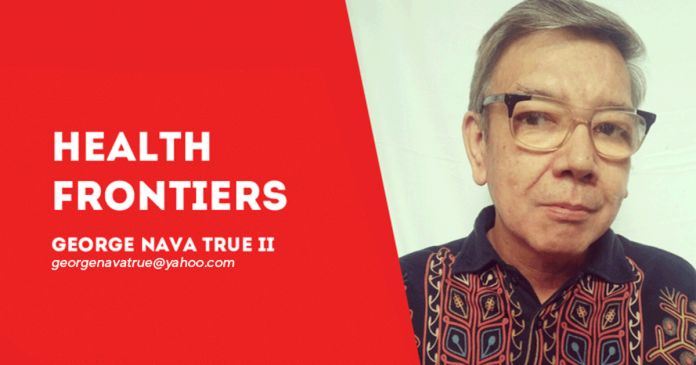
BY GEORGE NAVA TRUE II
ON AUG. 3, 2021, I woke up in the middle of the night gasping for breath. My lungs were filled with fluid, a raspy sound accompanied my breathing, and I felt like I was drowning. I was tired and wanted to lie down. But whenever I did, I would cough and feel something itchy in my chest.
My wife was alarmed, and I told her to call an ambulance. It took some time before one arrived. By the time the paramedics came early in the morning, I was weak and lost consciousness.
Five hours later, I opened my eyes and found myself at the Western Visayas Sanitarium in Sta. Barbara, Iloilo near our home. An IV was sticking out of my right hand and I had a pulse oximeter in my left index finger. The latter is a small device that is clipped to the finger to measure how well the heart pumps oxygen through the body. I was also hooked up to an oxygen tank.
Pale and dying
When I was transported to the hospital, my wife said the paramedics couldn’t measure my oxygen level. It dropped to a dangerously low level, and my body was pale. Most normal healthy individuals have an oxygen level of 95%. Mine was only 22%.
At one point, my wife was asked to sign a do-not-resuscitate order since the hospital didn’t have the facilities to revive me. I was close to death, and the people around me thought I wouldn’t make it. But the paramedics never gave up. After hours of giving me medicines to increase my oxygen level, I finally woke up. My wife said I was lucky to be alive.
More bad news
The bad news came afterwards. Doctors said I had pneumonia and congestive heart failure. Days later, I was told that I had COVID-19. Before, the latter was the least of my worries since I worked at home, had no symptoms, and rarely went out. I was confident that the virus would never attack me. But it did and doctors said it affected my lungs, heart, and kidney at the same time.
Although the good doctors at Western Visayas Sanitarium kept me alive, they admitted that they couldn’t manage my other conditions. They lacked specialists – there were no pulmonologists, cardiologists, or nephrologists there – and they didn’t have the facilities to help in case my condition worsened.
Three days later, I transferred to Iloilo Doctors’ Hospital Inc. in Molo, Iloilo City. I am currently confined here, and I’m happy to report that my health is improving. My lungs are clear, my breathing is normal, and my heart condition is being treated. My swollen legs are shrinking thanks to three sessions of hemodialysis and blood transfusions so far. I no longer have an IV attached to my hand, and no longer need an oxygen tank to breathe. Provided nothing goes wrong, I hope to leave the hospital in a week.
The people who cared
I am indebted to all those who helped me recover. A big thanks go to my attending physicians, Drs. Russell Omena (my pulmonologist), Yvette Silubrico (infectious disease specialist), Maria Bernadette Eslaban (nephrologist), and Roberto Estepar (cardiologist) for their care and concern. Also, thanks to all the nurses and staff of Iloilo Doctors’ Hospital Inc. who are always here for me, and to all my friends, classmates, schoolmates, former teachers, media colleagues, and PR friends who made a difference in my life, especially my loving wife Cheryl and my two kids who were always around to help me.
Finally, I am indebted to New Lucena Municipal Mayor Leicel Mondejar-Seville and Sta. Barbara Mayor Rema Somo for their immediate support. I will never forget what you have done for me. Mabuhay kayo!
***
National Press Club and Philippine Dental Association awardee George N. True II has written two bestsellers based on his popular column which has been running for almost 40 years. For questions about health, email georgenavatrue@yahoo.com./PN

